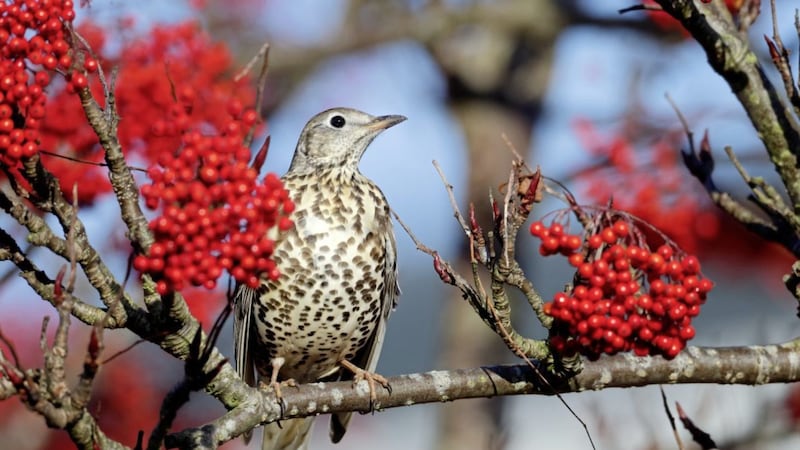NOW in early December, we are, meteorologically at least, in winter. The dusting of pine needles strewn along pathways of the local church grounds, together with biting Arctic winds of late, confirm this.
In astronomical terms, however, winter doesn't arrive in our Northern Hemisphere until Tuesday December 21, the winter solstice, and shortest day of the year after which daylight begins to increase very gradually.
Early pagan communities from across Europe and Scandinavia celebrated a 12-day midwinter 'solstice holiday' around this time called Yule, from which come some of our modern Christmas symbols, like the traditional yule log burnt away back then to vanquish the darkness as an offering to the solstice.
During this period of ancient celebration there was much merriment and dancing to mark nature's reawakening.
On the point of increasing light, nature author Richard Mabey in Nature Cure (2005) contends that, "Because the earth's orbit round the sun isn't symmetrical, the relentless pincer movement of darkening mornings and afternoons doesn't conclude with a neat snap on Solstice Day."
He states while mornings don't begin to brighten until New Year's Day, "the evenings draw out from the 12th" (of December).
As we edge closer to year's end, nature still punctuates the tedious darkness to lift our spirits, with episodes like the evocative calls from wild geese overhead, a robin's fluty notes on leafless boughs or boisterous crows filling the morning sky with wild abandon after their nightly roost.
A heartening brush with nature in recent weeks has been the repetitive song from a local mistle thrush. Larger than its slimmer song thrush cousin, Turdus Viscivorus's habit of singing through stormy, wintry weather has earned it the name 'storm cock'.
The bird's dawn and evening singing recalled Thomas Hardy's poem The Darkling Thrush, written in December 1900, which tells of a thrush defying the desolate winter world with its song of hope and promise of brighter days.
The poet writes:
At once a voice arose among
The bleak twigs overhead,
In a full-hearted evensong
Of joy illimited.
An aged thrush, frail, gaunt and small,
With blast-beruffled plume,
Had chosen thus to fling his soul
Upon the growing gloom.
Although the mistle thrush, with its bold chest markings and upright stance only arrived in Ireland at the start of the 19th century, it is now a common resident.
The bird gives out a loud, distinctive rattle, often indicating a predator is near or another bird landing in a favoured berry tree. However, the full song of 'Smólach mór', or big thrush, is somewhat like a blackbird's, though not quite as musical, with more widely spaced phrases.
Less frequent visitors to our gardens than song thrushes and blackbirds, the mistle thrush favours larger parkland and open rural areas. Feeding on insects and worms, it also feasts on berries, the name 'mistle' given to the bird because of its role in distributing the seeds of the parasitic mistletoe plant to new host trees such as poplar and apple trees.
Our own druids regarded the mistletoe as sacred, believing it to have healing properties against all poisons and so around the solstice a ceremonial cutting of the plant with a golden sickle took place, often from an oak tree, with slaughtered beasts also offered up on this hallowed occasion.
The much tamer modern custom of hanging the plant during the festive season has, no doubt, its origins in those pagan rituals.
I'm grateful to my thrush as it continues to sing out routinely from the topmost branch of a nearby ash, with, in Hardy's words, "His happy good-night air" unafraid and untroubled by winter's dark chill.








